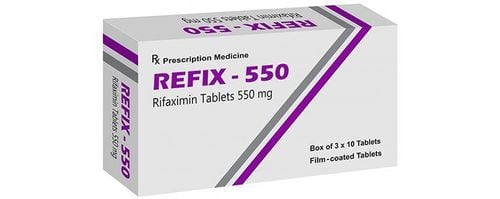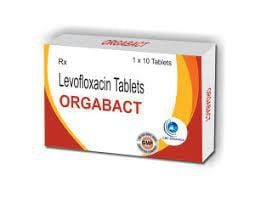This is an automatically translated article.
Zosyn contains 2 main ingredients: Piperacillin, an antibiotic of the Penicillin group, and Tazobactam, a β-lactamase inhibitor. It can be used alone or in combination with other antibiotics in the treatment of moderate to severe infections.1. What is Zosyn?
Zosyn contains 2 main ingredients: Piperacillin and Tazobactam. Piperacillin is an antibiotic of the penicillin group, which has bactericidal activity by inhibiting bacterial cell wall synthesis. Tazobactam is an inhibitor of the β-lactamase enzyme secreted by bacteria, which increases the durability and extends the antibacterial spectrum of the antibiotic Piperacillin. Zosyn is usually indicated for the treatment of moderate to severe infections. The drug can be used alone or in combination with other antibiotics depending on the patient's infection characteristics. To reduce the development of drug-resistant bacteria and maintain the effectiveness of Zosyn, the drug should only be used for the treatment or prevention of infections that are proven or suspected to be caused by bacteria.2. What does Zosyn do?
Zosyn is indicated in the treatment of infections caused by susceptible strains of bacteria including:
Intra-abdominal infections: Appendicitis complicated by rupture or abscess, peritonitis caused by yeast-producing E. coli β-lactamase or by bacteria of the Bacteroides fragilis group such as B. fragilis, B. ovatus, or B. vulgatus. Uncomplicated and complicated skin and skin structure infections, including cellulitis, skin abscesses, and ischemic/diabetic foot infections caused by Staphylococcus aureus. Pelvic infection in women: Postpartum endometritis or pelvic inflammatory disease. Community acquired pneumonia. Hospital pneumonia. Urinary tract infections . Bone and joint infections. Severe vaginal infection.
3. Contraindications of Zosyn
Zosyn antibiotic is contraindicated for use in the following cases:
Patients with hypersensitivity to the active substance or to any of the excipients listed in the formulation. Patients with a history of severe allergic reaction to any other beta-lactam active ingredient (eg, Cephalosporin, Monobactam or Carbapenem).
4. Dosage and usage of Zosyn
Dosage:
The usual dose of Zosyn for adult patients is 3.375g – 4.5g every six hours. The usual duration of Zosyn antibiotic treatment is 7 to 10 days. For nosocomial pneumonia and bacterial infections in neutropenic patients, the recommended dose is 4g Piperacillin/0.5g Tazobactam administered every six hours. This regimen can also be used to treat patients with other particularly serious infections. Patients with renal impairment: In patients with renal impairment (creatinine clearance ≤ 40 mL/min) and on dialysis, the dose of Zosyn should be adjusted according to the patient's glomerular filtration rate. Patients with hepatic impairment: No dose adjustment of Zosyn is required in patients with hepatic impairment. Elderly patients: No dose adjustment of Zosyn is required for the elderly with normal renal function or creatinine clearance values above 40ml/min. Children: For children with appendicitis and/or peritonitis, the recommended dose of Zosyn is 100 mg Piperacillin/12.5 mg Tazobactam per kg body weight, every 8 hours in pediatric patients 9 months age or older. For pediatric patients 2 to 9 months of age, the recommended dose is 80 mg Piperacillin/10 mg Tazobactam per kg body weight, every 8 hours. Dosage:
Zosyn should be administered by intravenous infusion over 30 minutes.
5. Side effects of the drug Zosyn
Patients using Zosyn may experience undesirable effects including:
Frequency > 10%:
Gastrointestinal: Diarrhea. Frequency 1 to 10%:
Cardiovascular: Flushing, hypotension, thrombophlebitis. Dermatology: Itching, skin rash. Endocrine and metabolic: Hypoglycemia. Gastrointestinal: Abdominal pain, Clostridium difficile colitis, constipation, dyspepsia, nausea, vomiting. Hypersensitivity: Anaphylaxis. Infection: Candida infection. Local: Reactions at the injection site. Nervous system: Headache, insomnia, irritability. Musculoskeletal: Arthralgia, myalgia. Respiratory: Nosebleeds. Other: Fever. Frequency unknown:
Endocrine and metabolic: Decreased serum albumin, decreased serum glucose, decreased total protein, electrolyte disturbances, hypokalemia Hematology: Decreased hematocrit, decreased hemoglobin, increased eosinophils, positive direct Coombs test, prolonged bleeding time, prolonged prothrombin time Liver: Increased AST, increased alkaline phosphatase, increased ALT, increased serum bilirubin Kidney: Increased blood urea nitrogen, increased serum creatinine, syndrome Renal failure Dermatology: Acute generalized exanthematous pustulosis, bullous skin disease, erythema multiforme, exfoliative dermatitis, Stevens-Johnson syndrome, toxic epidermal necrolysis Gastrointestinal: Clostridium difficile diarrhea
6. What are the precautions when using Zosyn?
Before starting treatment with antibiotics Zosyn should be thoroughly investigated for previous hypersensitivity reactions to penicillins, beta-lactam antibiotics and other allergens. Serious and sometimes fatal hypersensitivity reactions have been reported in patients being treated with Piperacillin/Tazobactam. These reactions are more likely to occur in patients with a history of sensitivity to multiple allergens. In the event of severe hypersensitivity reactions, antibiotic discontinuation, epinephrine and other emergency measures should be taken. Serious skin reactions, such as Stevens-Johnson syndrome and toxic epidermal necrolysis, drug reactions with eosinophilia, and acute exanthematous pustulosis have been reported in patients receiving Piperacillin/ Tazobactam. Patients with skin rashes should be closely monitored and Zosyn should be discontinued if lesions progress. Antibiotic-associated pseudomembranous colitis may present with severe, persistent diarrhea that can be life-threatening. In these cases, Zosyn should be discontinued. Treatment with the antibiotic Zosyn can lead to the emergence of resistant organisms. Bleeding has occurred in some patients receiving beta-lactam antibiotics. These reactions are sometimes associated with abnormalities of coagulation tests and are more likely to occur in patients with renal impairment. If bleeding occurs, antibiotics should be discontinued and appropriate therapy instituted. Leukopenia may occur, especially with prolonged treatment. Therefore, periodic evaluation of the blood count should be performed. As with treatment with other penicillins, neurological complications such as convulsions may occur with high doses, especially in patients with impaired renal function. Hypokalemia may occur in patients with low potassium stores or in those receiving concomitant medicinal products that may lower potassium levels. Therefore, periodic testing of electrolyte levels is recommended. Pregnancy: Piperacillin and Tazobactam can cross the placenta. The antibiotic Zosyn should be used during pregnancy only when the expected benefits outweigh the possible risks to the pregnant woman and the fetus. Lactation: Piperacillin is excreted in low concentrations in breast milk. Breastfeeding women should be treated with Zosyn only if the expected benefit outweighs the possible risk.
7. Drug interactions
Drug interactions will change the activity or increase the toxicity of the drug. Here are some drug interactions to watch out for when using Zosyn:
Concomitant use of Zosyn with Heparin and oral anticoagulants may alter the anticoagulant effect. Therefore, regular monitoring of coagulation tests is recommended when Zosyn and these drugs are used concomitantly. Piperacillin may decrease the excretion of methotrexate; Therefore, serum Methotrexate should be monitored to avoid toxicity. As with other penicillins, concomitant use of Probenecid and Zosyn causes a prolongation of the drug's half-life. Vancomycin: Several studies have found an increased incidence of acute kidney injury in patients receiving piperacillin/tazobactam and vancomycin concomitantly compared with vancomycin alone. Aminoglycosides can be inactivated by Piperacillin if mixed together. Therefore, it is recommended that Zosyn and Aminoglycoside be administered by separate routes of administration. The article has provided information about the uses, doses and notes when using Zosyn. The information above is for reference only and cannot replace the guidance of medical personnel. If you need more information about the drug, you should contact your doctor or pharmacist for advice.













